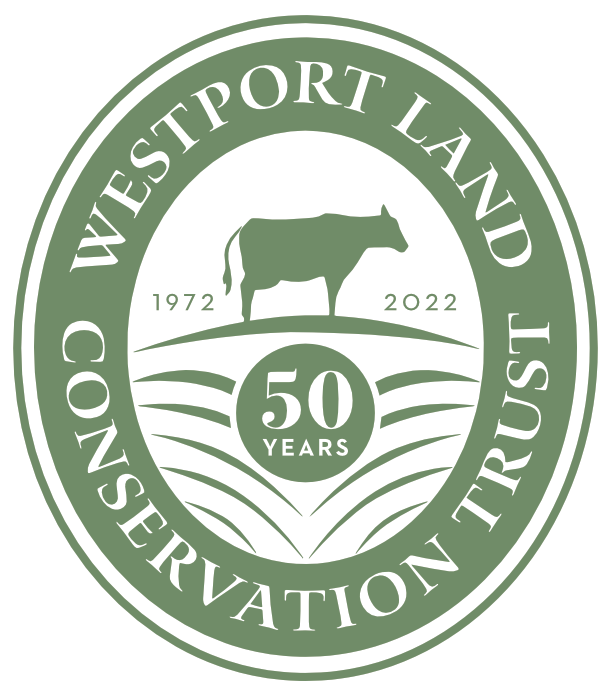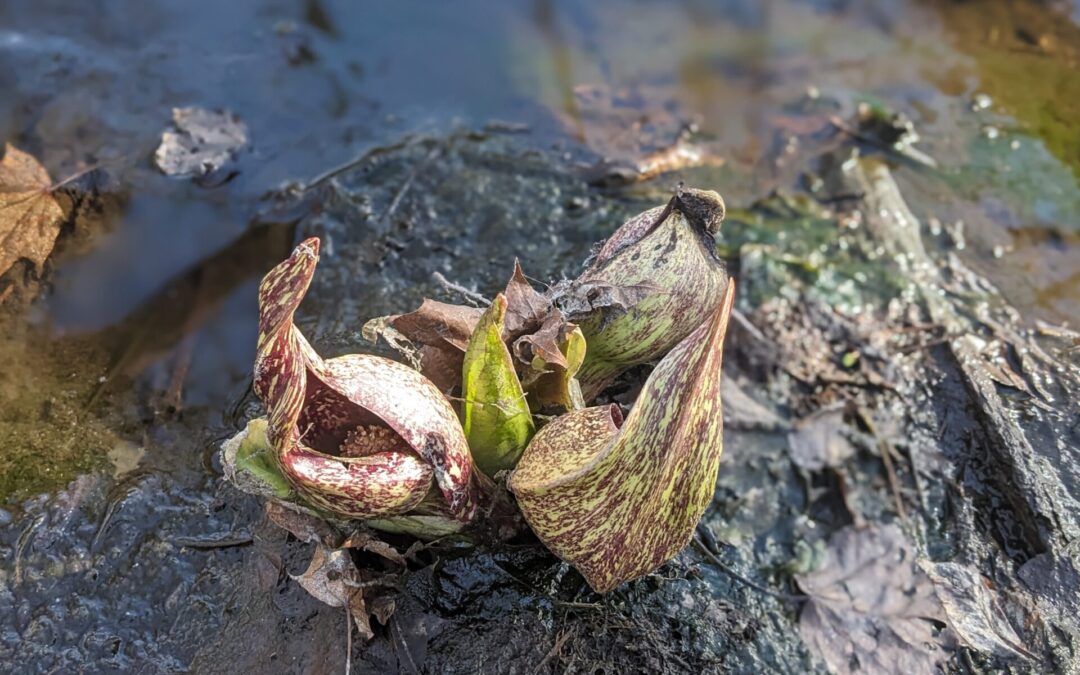With the arrival of Spring comes many of the changes of nature–slow at first, and then suddenly faster and louder! Let’s take a look at some of the spring awakenings that kick into life in the coming weeks.
All about the frogs
Perhaps the most recognizable sign of spring’s arrival is the relentless song of the spring peeper! The spring peeper (Pseudacris crucifer) is the tiny chorus frog endemic to North America east of the Mississippi and in all points north of Florida, including Westport. These little amphibians are particularly at home in the precious forested wetlands. Their continuous chorus is well known to visitors and natives alike.
Our local wood frog (Lithobates sylvaticus) sounds something like a duck more than a “ribbit” and you can hear them quacking away in wetland ponds and pools across town. Wood frogs and salamanders migrate to their breeding ponds on the first warm, wet nights of early Spring.
Listen to the wood frogs’ unique call.
Learn more about these amphibians and other wetland and forest natives at our Vernal Pool Exploration, a family-friendly educational program at Westport Woods on April 12!
Dust off those binoculars
Birds are on their way! The long slumber of winter is over, and spring migration has begun. Early spring is an extraordinary time of year to get to know your local birds, and to get ready for the incoming spring migrants. If you are looking for more information, stop by the Learning Center to use a guidebook or pick up a check list of local birds.
Look out your window. Do you see the early arrivals, or the overwintering birds who make their presence known as the days lengthen and temperatures rise. Familiar faces like American robins and Eastern bluebirds are more active now, as well as louder forest inhabitants like towhees and cardinals.
With the excitement of spring migration comes a bevy of new arrivals. Waterfowl begin to arrive April into May, more ducks, like the Blue-winged Teal, repopulate our fresh water bodies. Plus, we’ve begun to see the return of our idiosyncratic Piping plovers, and other charismatic shorebirds. As spring moves along, more of these beach-dwellers will return from their southern winter sites to lay eggs along our sandy shorelines. With the Westport River Watershed Alliance, we are offering two Spring Strolls, at Old Harbor Wildlife Refuge (a bird paradise) on April 28th and at Gooseberry, May 14th.
Bugs and plants and big plans
Visitors to Westport Woods will notice that we have mown our grasslands and meadows. As the days warm, insects that have overwintered hatch and the small mammals harboring in the grass clumps make their way to the relative safety of the forest edges. This gives our Land Steward the opportunity to cut down last year’s growth so that the perennial grasses and forbs can photosynthesize before they are outcompeted by the annuals that are a part of our seed mix. This maintenance promotes the seasonal growth. By the end of May, these grasses will be well on their way back to maturity, and beckoning the coming of summer insects that will fill the skies, to be followed by hungry insectivores like tree swallows and chimney swifts. We foster and nourish this cyclical pattern through our management and land preservation practices. The resulting diversity of habitat brings springtime visitors back to the forests and fields of Westport.
Take a walk along the Yellow Trail at Westport Woods, the Red or Blue Trails through the meadow at Herb Hadfield or along the restored grassland at Dunham’s Brook as see what’s growing!


